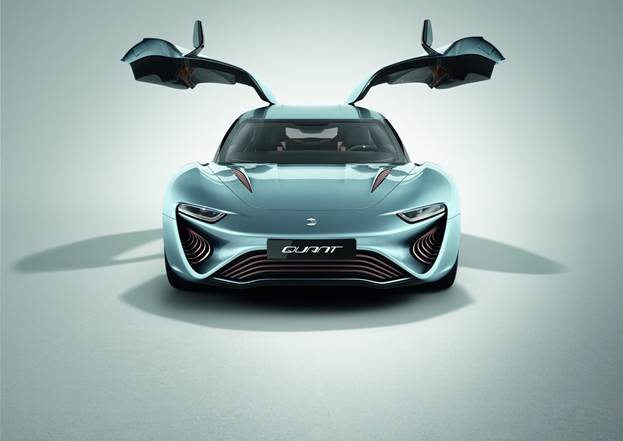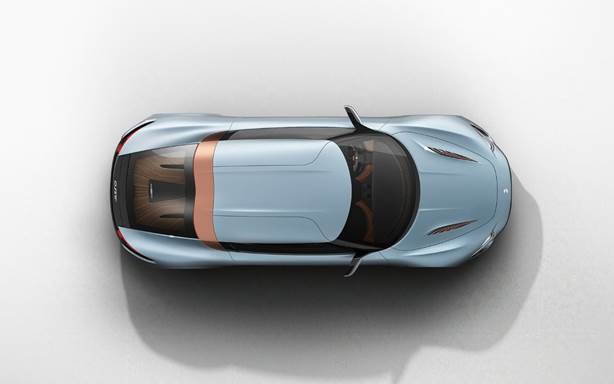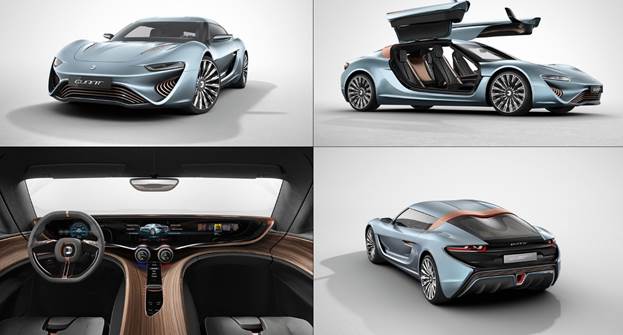Now for something a little different: a
super sedan featuring new technology that could represent a quantum leap for
automotive energy storage systems.
To live up to its exotic super-sedan looks,
with its gull-wing doors and very long double panels that give easy access to
the four-seater interior, the e-Sportlimousine delivers a peak 925ps/680kW
power output, a top speed of at least 380km/h (235mph), and 0-100km (0-62mph)
in just 2.8 seconds – while delivering an energy consumption of 20kWh per
100km, all of which makes very impressive reading. At 5.25m long and 2m wide,
it is not exactly compact, but its body is purposedesigned to accommodate those
bulky electrolyte tanks, and further increasing tank volume to give added range
would be simple, according to La Vecchia.

“It
works like a combination of a battery and a fuel cell using liquid electrolyte,
which is kept in two tanks and pumped through the cell. At the heart of the
system is a membrane that separates two differing chemistries. A controlled
exchange of charges releases energy for the electric powertrain.”
So far e-Sportlimousine remains just a
tech-demonstrator, but though La Vecchia’s earlier collaboration with
Koenigsegg on the NLV Quant concept (shown at the Geneva Motor Show in 2009)
came to nothing, he and his engineering team have been working with Bosch
Engineering to put the e-Sportlimousine through the formal homologation
process. “Transforming an initial prototype into a series-production vehicle that
can be used around the world is a big challenge. We are certain that we can
manage it with this established and experienced partner,” he says.
Ongoing engineering tasks include further
developing the vehicle’s electronic systems, including calibration of the
recuperative charging strategies and regenerative cell charging. Road
certification for the test vehicle is expected this year with the build of five
drivable prototypes, and homologation for series production is planned for
2015.

Until
now, flow cells based on redox principles have been too heavy and their energy
conversion rates too sluggish for use in mobile applications.
The main job of the e-Sportlimousine,
however, is probably to act as a flagship profile-raiser for the NanoFlowcell
technology, with the company suggesting that its scalable battery cells could
be used in anything from trains and planes to computers, air conditioners and
agricultural machinery, as well as for domestic energy storage of
renewable-source electricity and power supply to local communities in remote
off-grid areas.
They could rival the semi-solid flow
batteries containing the ‘Cambridge crude’ electrolyte under development by
Massachusetts-based 24M Technologies, a company formed from a partnership
between A123 Systems and MIT.

This
is where the nanoFLOWCELL technology opens the door to a broad palette of new
technical opportunities. The improvements that have given the system such a
major performance boost are the result of research into the quantum chemistry
of electrolytic fluids. The most important innovation of the nanoFLOWCELL is in
its significantly higher charge- and power-density thanks to an extremely high
concentration of ionic charge carriers in the cell system’s electrolyte.
GE has also been working on water-based
flow batteries, which could cost 75% less than lithiumion for mainstream
automotive use and give a 385km (240-mile) range. The NanoFlowcell batteries
could be the first to make it out of the lab and onto the road, however, even
if at this stage much of the company’s promises are based solely on simulation
work.